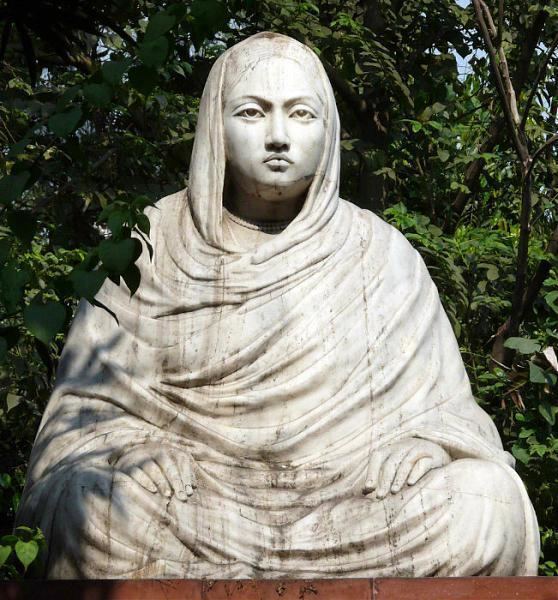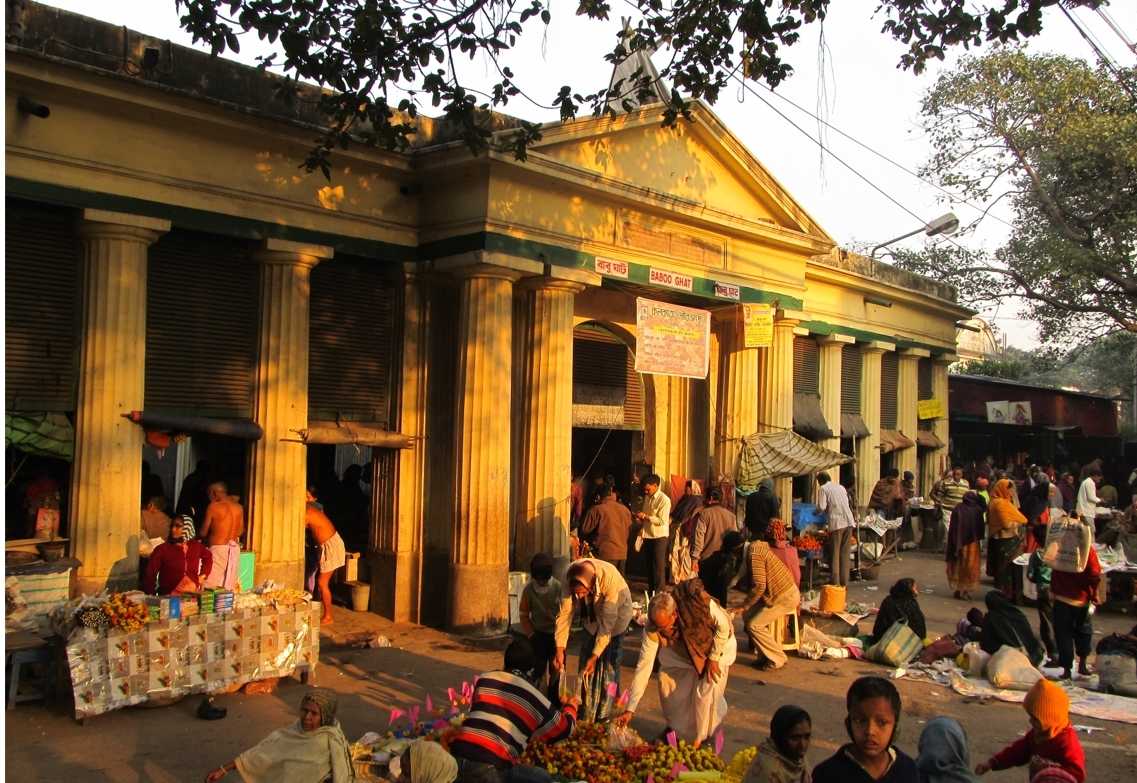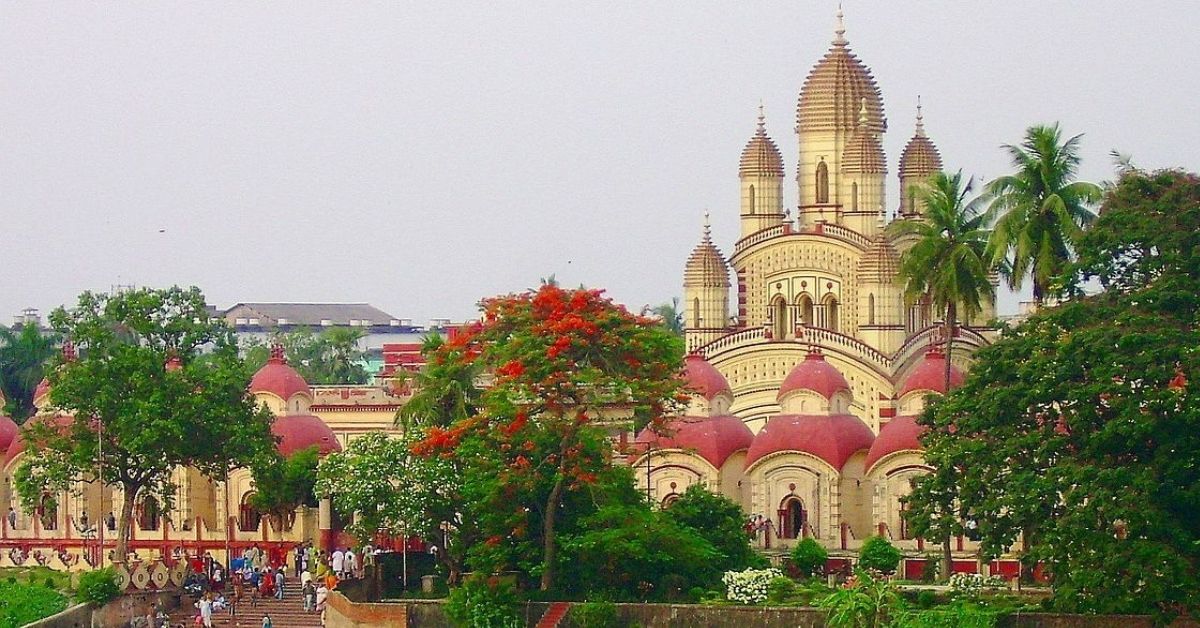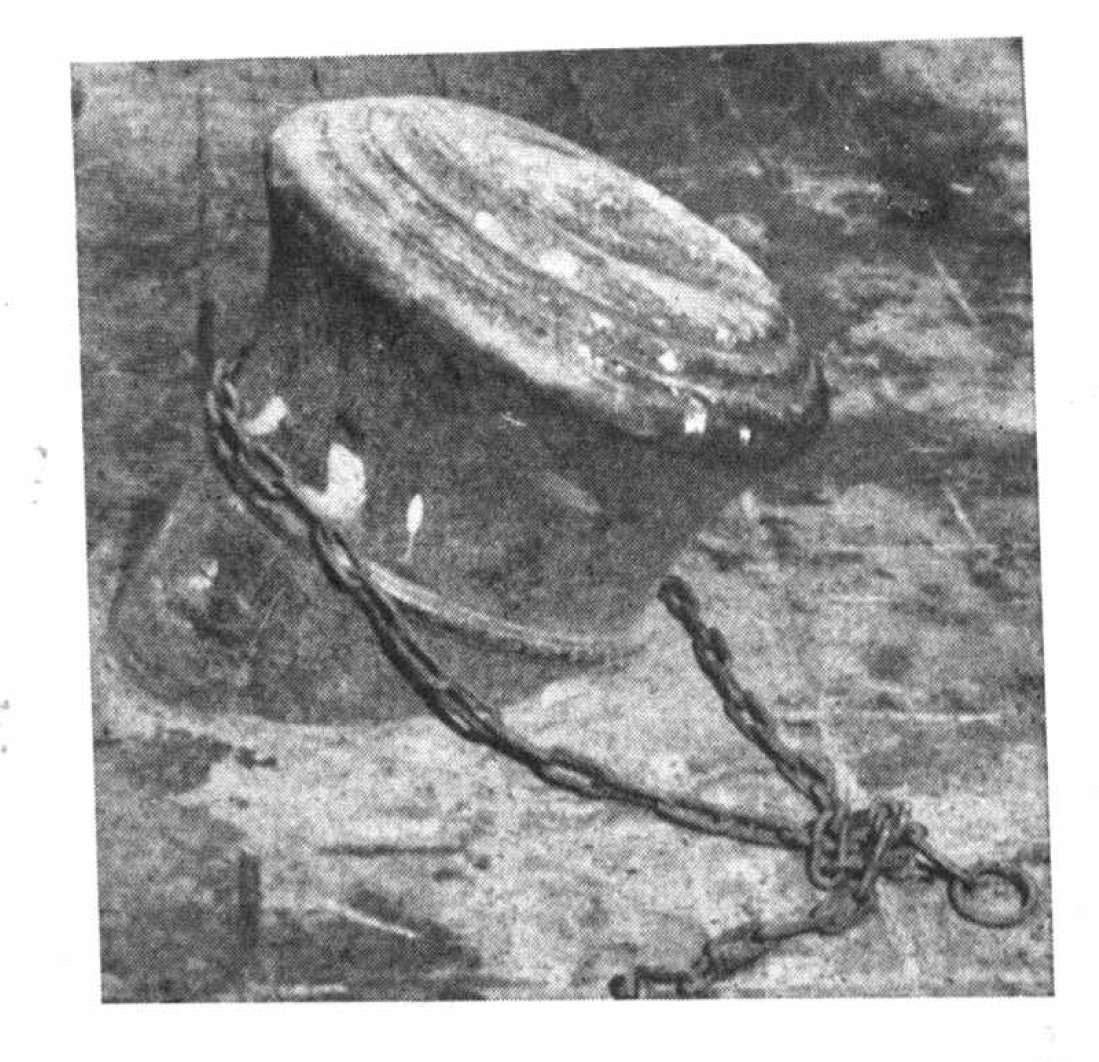For all of history, Indian women have been championing social change, pioneering important movements, and making invaluable contributions to society. But as can be seen from our history books, their contributions are all too easily forgotten.
One such forgotten heroine is Rani Rashmoni, a ‘rani’ who wasn’t really a queen, and yet ruled the hearts of the people to such an extent that they bestowed the honor on her.
From fearlessly taking on the East India Company to founding the iconic Dakshnineshwar Kali temple, Rashmoni left an indelible mark on the history of Kolkata (erstwhile Calcutta).

A Woman Entrepreneur Ahead of Her Time
Rashmoni was born on 28 September 1793 in the small village of Halisahar in Bengal into a kaivarta (fishermen community) family. Her father was a poor labourer, who married his daughter to Raj Chandra Das — the scion of a wealthy zamindar family from Jaan Bazaar — when she was still in her teens.
Das was a progressive husband; educated and unconventional for those archaic times. Impressed by how astute she was, he encouraged his young wife to follow her heart and gave her unfettered access to his trade business.
Together, they built up a great fortune, channelling much of their wealth towards public welfare, from building pyaus (reservoirs of drinking water) for the abandoned to setting up soup kitchens for the hungry. The couple also built two of Kolkata’s oldest and busiest ghats, the Ahiritola Ghat and the beautiful Babu Rajchandra Das Ghat, or Babughat.

However, Das passed away in 1830, and the years after his death saw Rashmoni passing through her toughest time. Battling patriarchy and the then-prevailing societal stigma against widows, the mother of four young daughters took over the reins of the family’s sprawling business – something that was virtually unheard of in those days.
When her husband’s adversaries and acquaintances heard this news, they were delighted by the prospect of an easy takeover, assuming that the kind-hearted widow would not provide much resistance. They would soon learn otherwise.
Displaying astute business sense, Rashmoni fended off these attempts, managing her work with exemplary pragmatism and the help of Mathura Nath Biswas, an educated young man married to her third daughter. For the rest of her life, Mathura babu (as he was called) would remain her trusted confidante and right-hand man in all dealings.
In the years that followed, Rashmoni raised her voice for two important causes — one, to fight against prevalent social ills like polygamy, child marriage and sati; and two, to support trailblazing social reformers like Ishwar Chandra Vidyasagar, even submitting a draft bill against polygamy to the East India Company.
She also built the famous Dakshineswar temple near Kolkata, braving taunts from Brahmins who refused to become priests at a temple constructed by a woman from a lower Shudra caste. Eventually, religious leader Ramakrishna Paramhansa would go on to serve as the Chief Priest of the temple.

While such constructions and business acumen earned her much respect in Calcutta’s administrative circles, it was her compassion and solidarity with the downtrodden that endeared her to the underprivileged. No incident reveals this better than when she out-maneuvered the British to help beleaguered fishermen.
Taking on the Cunning East India Company
In the 1840s, East India Company had turned its profiteering focus towards the long stretch of river Ganga, which flowed through the Bengal Presidency. These thriving waters were a lifeline for the fishing communities of the region, who depended on it for survival as well as their livelihood.
Arguing that the fisherfolks’ small boats were impeding the movement of ferries, East Indian Company imposed a tax on fishing boats, a cunning way of raking in extra revenue while reducing fishing activities on the river.
Scores of worried fisherfolk travelled to Calcutta to plead their case with their elite landlords, but they didn’t receive any support. So as a last resort, they appealed to Rashmoni.
What happened next is truly remarkable. Rashmoni gave Rs 10,000 and procured an ijara (lease agreement) from the East India Company, for a 10-km stretch of river Hooghly (Ganga’s distributary the flows through Calcutta). She then proceeded to place two huge iron chains across the Hooghly to barricade her leased area and asked the distraught fisherfolk to cast their nets in this zone.
The impact of this smart move left Company officials bewildered and rattled — it brought all riverine traffic on the Hooghly to a grinding halt. When they asked Rashmoni for an explanation, she said that it was necessary to protect her income from the property as commercial steamships were affecting fishing activities in her ijara.
The feisty woman also quoted British law to point out that she was entitled to do so, and was happy to fight it out in a court if the company thought otherwise!
With boats piling up on both sides of the shackled zone, East India Company was compelled to come to an agreement with Rashmoni. The tax on fishing was abolished, protecting the rights of fisherfolk and giving them unrestricted access to the Ganga.
And that’s how a widow outwitted the famously insidious Company.
Over a century later, in 1960, eminent Bengali writer Gauranga Prasad Ghosh clicked a picture of the sole remnant of this historic moment — that of a gigantic iron peg, which was once used to fasten Rashmoni’s chains across the Hooghly.

The peg may have remained uncelebrated all those years, but the grateful fisherfolk never forgot their ‘Rani’. For them, as Bengali author Samaresh Basu wrote in his ‘Ganga’ (originally published in the magazine Janmabhoomi in 1957), the river forever remained ‘Rani Rashmonir Jal’ (‘the waters of Rani Rashmoni’).
No comments:
Post a Comment